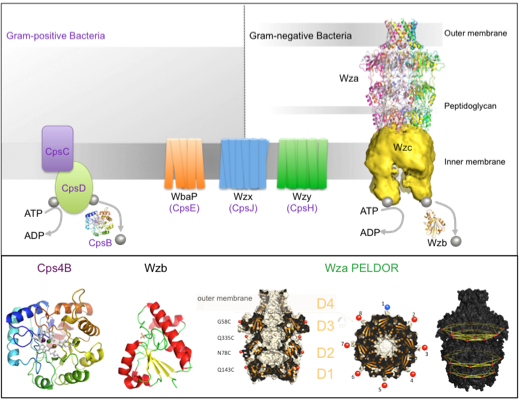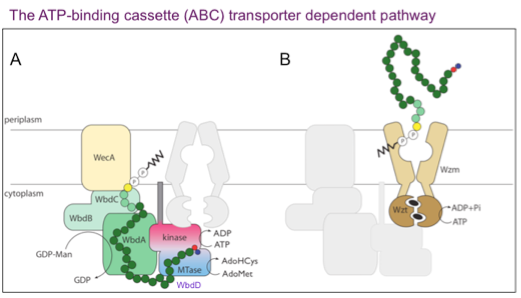Simon Bushell, Hexian Huang

Most Gram-negative bacteria contain lipopolysaccharide (LPS) as a major component of the outer membrane. LPS formed by a well-conserved anchor, lipid A, linked to a hyper-variable strain specific O-antigen polysaccharide (O-PS) (Stenutz et al, 2006) via a short core oligosaccharide (Raetz & Whitfield, 2002). LPS is very important for interactions with the host immune defenses and the presence of O-PS plays a role in resistance to complement-mediated killing (Joiner, 1988). So far, only three types of bacterial glycan synthesis systems have been described: the Wzy-dependent pathway, the synthase-dependent pathway and the ATP-binding cassette (ABC) transporter dependent pathway (Cuthbertson et al., 2010).
The export of Group 1 and Group 4 capsules are mediated by components of the Wzy-dependant export pathway - a network of proteins integrated or associated with the outer and inner membranes of Gram-negative bacteria that polymerise and export the capsules cytoplasmically-synthesised components. Our lab has previously solved the X-ray crystal structure of Wza, the main translocase of capsule components across the outer membrane. We have also published cryo-EM structures of Wza in complex with Wzc, an inner membrane kinase which assists in the polymerisation of capsular polysaccharides.

The structural characterisation of proteins that localise to biological membranes is traditionally a very difficult field of protein crystallography, as the over expression, solubilisation, and purification of recombinant membrane proteins are hampered by their high hydrophobicity. Our lab focuses on strategies to overcome these hurdles and apply them to interesting biological systems.

